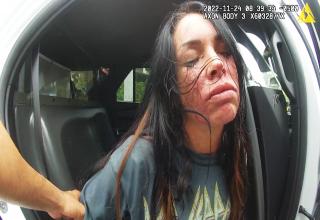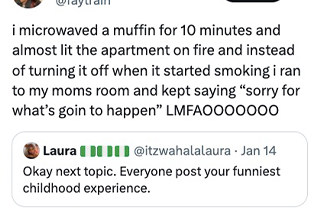
A school shooter has recently found fame on TikTok, sparking discussions about the ethics of giving seemingly reformed school shooters major platforms, particularly on an app heavily used by children and teenagers.
In February 2004, Jon Romano brought a gun to Columbia High School in East Greenbush, New York. After forcing a student out of the bathroom at gunpoint and firing at two other students in the hallway, Romano was subdued, but not before firing off another round and wounding a teacher. Fortunately, nobody was killed, and 17-year-old Romano was sentenced to 20 years in prison, and was released after serving 17 years.
Bizarrely, Romano didn’t initially find fame on TikTok because of his past, but rather because he was the victim of a sword attack last year. Romano was attacked while working at a homeless shelter, resulting in critical injuries to his arms and leg. In videos posted to TikTok, Romano has accused his attacker of racism, alleging that his attacker called him a “white devil.”
@jonseekingpeace My whole story for those who don't know #mentalhealthawareness #schoolsafety #reform #changeyourlife #greenscreen ♬ original sound - Jon Romano
Since then, Romano has continued to post to TikTok, sharing content both about life after the attack and his history as a school shooter. In videos, he has claimed that his intentions on the day he brought a gun to school were “not to kill, but be killed”; he claims that the purpose of his content is to bring attention to the importance of mental health.
@alyssaphobium @jonseekingpeace
♬ original sound - Lyss
While some have appreciated his candor, much of the response has been overwhelmingly negative. As one user, Lyss, put it, “If you shoot up a school, here are three things you shouldn’t be allowed to do. 1. Be on the internet. 2. Monetize the storytelling of your crimes. 3. Claim to be the victim of a hate crime when someone very accurately calls you a white devil.”
“This school shooter has been able to amass a following of over 250,000 people on an app made for children,” Lyss continued. “Your redemption arc after shooting up a school should be moving in silence, not boasting about how you’ve become a better person. It seems very much so that you are now searching for the attention that you were searching for back when you shot up that school, and it’s a shame that people are giving it to you.”
Romano is far from the only former prisoner on TikTok. Jesse Crosson, who at 18 was sentenced to 32 years in prison for robbery and a shooting, has amassed more than one million followers on the app (he interviewed Romano earlier this year, too). A key difference, as many see it, is the nature of Romano’s crime and the context in which he’s posting — a context in which many Americans feel helpless in the face of countless horrific school shootings. In addition, Romano has enabled live subscriptions, allowing people to subscribe to his channel for $9.90 per month, allowing him to profit from his videos, something many critics are uncomfortable with.
According to those critics, Romano lacks humility and a willingness to listen to criticism that you would expect from someone ready to acknowledge the harm they’ve caused. Romano currently has comments on all of his videos turned off, effectively silencing anyone who disagrees with his stated aims. It’s also not at all clear how his victims feel about Romano’s supposed redemption arc or newfound fame — instead, Romano, as the school shooter, is the focal point of his content.
Research suggests that media coverage that focuses on shooters can inspire copycat events. Per the National Center for Health Research, “As long as the media continue to focus their news stories on the attacker, it is likely that these copycats will continue.” With TikTok, Romano is able to circumvent traditional media channels and focus attention on himself from the comfort of his own home.
In his most recent video, Romano said that he will be taking time to reflect, and that “whether you believe me or not, I really do want to do good, I really do want to help people.” But to do so in a way that respects Romano’s victims as well as potentially vulnerable young viewers on TikTok, seems next-to-impossible.






3 Comments